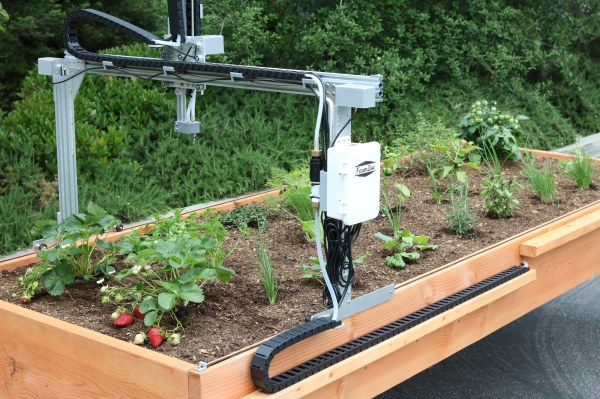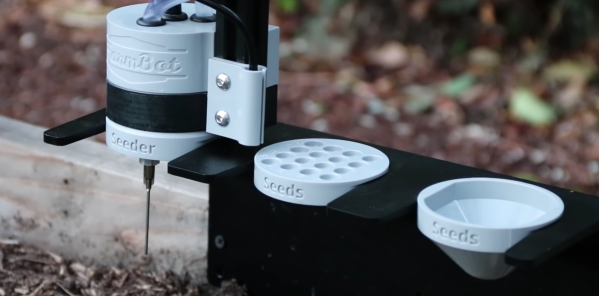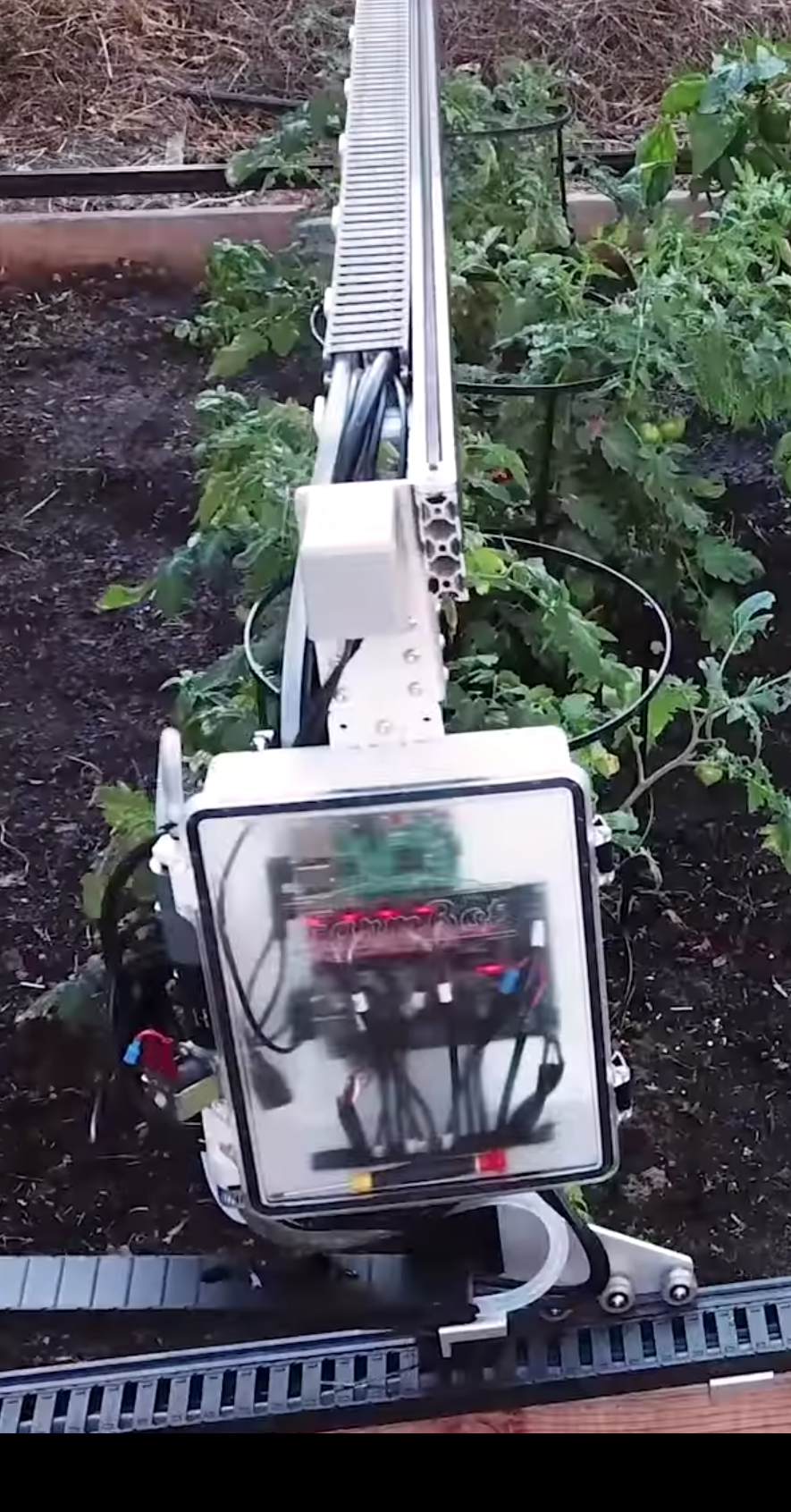Across the Northern Hemisphere it is now summer and the growing season is in full swing. Vigorous plants that will soon bear tasty fruit are springing forth from the soil, but unfortunately so are a lush carpet of weeds that require the constant attention of the gardener. “If only there were a machine that could take that on!” she cries, and as it happens she’s in luck.
The FarmBot is an open-source robotic vegetable grower able to take care of all aspects of sowing and tending a vegetable plot. We first saw them five years as a semifinalist in the first Hackaday Prize. This is a CNC machine for the raised beds of your backyard garden. Give it power, water, and a WiFi connection, and FarmBot goes into service planting, watering, weeding, and monitoring the soil. Now they’ve shipped over a thousand of their Genesis model and today have announced of a pair of new models that promise to make their technology more accessible than it ever has been.

In a nod to Tesla, FarmBot is calling this their “Model 3 moment” — the new offering is smaller and leaner to appeal to a wider customer base than their well-heeled, CNC machine loving, early adopters. The new FarmBot Express and Express XL models are now shipped 95% pre-assembled to lower the bar on getting up and running. They cover two sizes of planting bed: 1.2m x 3m or 2.4m x 6m, with an MSRP of $2295/2795 although there is currently an $800 launch discount available.
For us, FarmBot is the success story of an early Hackaday Prize entrant. From a great idea and a functional prototype, the project has successfully made the transition to commercial viability and holds a genuine promise of making the world a better place by helping people grow some of their own produce. Who knows, in five years time it could be your idea that’s reaching commercial viability, we think you should enter the Hackaday Prize too!






 Years ago the first and second Hackaday Prizes captured an entrant named FarmBot whose goal was to build open source robotic farming equipment to make it easier for anyone to grow their own food. A few successful Kickstarters and years later they’ve been shipped multiple versions of the Genesis and Genesis XL robotic farming system and have a sustainable business! And now they’ve decided to open source their
Years ago the first and second Hackaday Prizes captured an entrant named FarmBot whose goal was to build open source robotic farming equipment to make it easier for anyone to grow their own food. A few successful Kickstarters and years later they’ve been shipped multiple versions of the Genesis and Genesis XL robotic farming system and have a sustainable business! And now they’ve decided to open source their 











